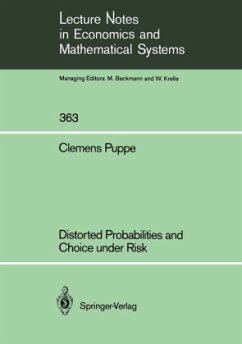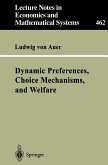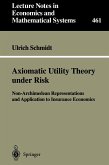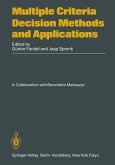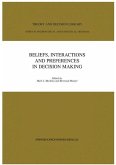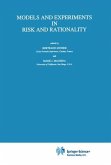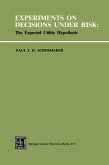This book provides a systematic, formal treatment of a recently proposed extension of the expected utility model of choice under risk: the so-called rank-dependent utility model. In this approach the representation of preferences is based upon a (generalized) utility function defined on the outcome/probability-plane. The main purpose of the book is to demonstrate the flexibility of this model with respect to its explanatory power. This is achieved by analyzing a certain subclass of the rank-dependent utility approach which incorporates the notion of price-dependent distortions of probabilities. This particular approach captures an optimistic point of view towards gambling (as can often be observed), whilst being compatible with a suitably formulated concept of risk aversion. The resulting model is used to explain some of the observed behavioral patterns as the Allais-paradox and the behavior described by the Friedman-Savage hypothesis.
During the development of modern probability theory in the 17th cen tury it was commonly held that the attractiveness of a gamble offering the payoffs :1:17 --- ,:l: with probabilities Pl, . . . , Pn is given by its expected n value L:~ :l:iPi. Accordingly, the decision problem of choosing among different such gambles - which will be called prospects or lotteries in the sequel-was thought to be solved by maximizing the corresponding expected values. The famous St. Petersburg paradox posed by Nicholas Bernoulli in 1728, however, conclusively demonstrated the fact that individuals l consider more than just the expected value. The resolution of the St. Petersburg paradox was proposed independently by Gabriel Cramer and Nicholas's cousin Daniel Bernoulli [BERNOULLI 1738/1954]. Their argument was that in a gamble with payoffs :l:i the decisive factors are not the payoffs themselves but their subjective values u( :l:i)' According to this argument gambles are evaluated on the basis of the expression L:~ U(Xi)pi. This hypothesis -with a somewhat different interpretation of the function u - has been given a solid axiomatic foundation in 1944 by v. Neumann and Morgenstern and is now known as the expected utility hypothesis. The resulting model has served for a long time as the preeminent theory of choice under risk, especially in its economic applications.
During the development of modern probability theory in the 17th cen tury it was commonly held that the attractiveness of a gamble offering the payoffs :1:17 --- ,:l: with probabilities Pl, . . . , Pn is given by its expected n value L:~ :l:iPi. Accordingly, the decision problem of choosing among different such gambles - which will be called prospects or lotteries in the sequel-was thought to be solved by maximizing the corresponding expected values. The famous St. Petersburg paradox posed by Nicholas Bernoulli in 1728, however, conclusively demonstrated the fact that individuals l consider more than just the expected value. The resolution of the St. Petersburg paradox was proposed independently by Gabriel Cramer and Nicholas's cousin Daniel Bernoulli [BERNOULLI 1738/1954]. Their argument was that in a gamble with payoffs :l:i the decisive factors are not the payoffs themselves but their subjective values u( :l:i)' According to this argument gambles are evaluated on the basis of the expression L:~ U(Xi)pi. This hypothesis -with a somewhat different interpretation of the function u - has been given a solid axiomatic foundation in 1944 by v. Neumann and Morgenstern and is now known as the expected utility hypothesis. The resulting model has served for a long time as the preeminent theory of choice under risk, especially in its economic applications.

